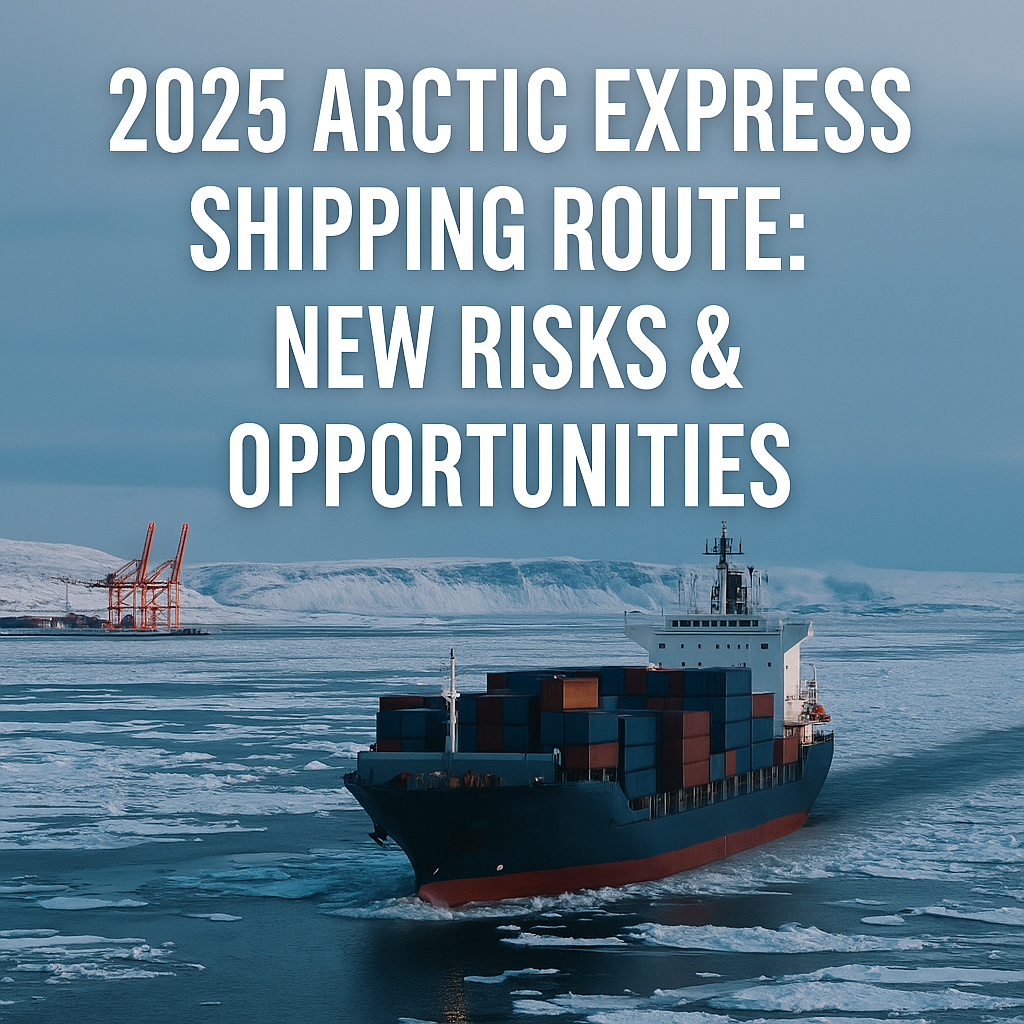Chinese shipping firm Haijie reportedly launched an “18-Day Arctic Express” container route traversing the Arctic. At a time when climate change is reworking navigable passages and geopolitical interests are converging in polar seas, this move is more than symbolic—it may foreshadow new corridors of trade, risk, and strategic competition. In this post, we unpack the “2025 Arctic express shipping route”: its opportunities, hazards, and what maritime operators need to be thinking about now.
Why Now? Opening the Arctic Route
- Melting sea ice & seasonally navigable windows are making Arctic shipping increasingly viable during summer months.
- Shorter transit times: the Arctic route promises to cut distance for Asia → Europe or North America compared to traditional routes through the Suez or Panama when conditions allow.
- Strategic investment: countries like China and Russia are accelerating polar infrastructure (ports, icebreakers, satellite coverage) to support new routes.
- State support: given the scale and capital requirement for Arctic operations, national backing is almost inevitable.
Geopolitical & Regulatory Implications
- Sovereignty & overflight rights: The route may transit through waters claimed by Russia, Canada, or other Arctic states—requiring diplomatic navigation and rights-of-passage agreements.
- Polar Code & environmental safeguards: Operations must comply with IMO Polar Code, including ice navigation rules, pollution prevention, and ship design adaptation.
- Security risk exposure: Remote, harsh conditions complicate search & rescue (SAR), communications, and response to attacks, piracy, or state interference.
- Infrastructure gaps: Ports, icebreaking support, bunkering, and satellite communications are sparse; any failure or breakdown can be catastrophic in Arctic conditions.
Operational and Risk Challenges
- Ice hazards & route unpredictability: Sea ice movement, weather, and seasonal shifts make route planning complex and dynamic.
- Communications & navigation constraints: Polar latitudes challenge GPS reliability, satellite coverage, and redundancy systems.
- Environmental risk & spill response: Any cargo or fuel spill in fragile polar ecosystems can have outsized effects, and cleanup resources are very limited.
- Crew training & cold operations: Vessels and crews must be equipped for extreme cold, response to ice damage, and survival contingencies.
Strategic Considerations for Maritime Stakeholders
- Selective deployment: Only certain vessel classes (ice-strengthened, dual-fuel, high reliability) are suitable for such routes.
- Insurance & liability shifts: Higher premiums and coverage limitations will apply for Arctic voyages.
- Partnerships & joint ventures: Collaborate with polar research institutes, state agencies, and satellite operators.
- Route monitoring & intelligence: Use AIS, ice charts, satellite surveillance, and real-time monitoring to anticipate hazards.
- Phased approach: Start with test sailings, incremental cargo, and risk-mitigated segments rather than full service immediately.
Conclusion
China’s 2025 Arctic Express shipping route is a bold bet at the intersection of climate change, technological capability, and geopolitical ambition. It introduces new trade corridors—and a host of risks unseen in warmer seas. For shipping companies, ports, insurers, and regulators, the time to conceptualize Arctic strategies is now, not later.
Want to explore Arctic route readiness?
Reach out to our team to model operational, regulatory, and cybersecurity risk for polar shipping corridors—be prepared before the ice gives way to opportunity.

